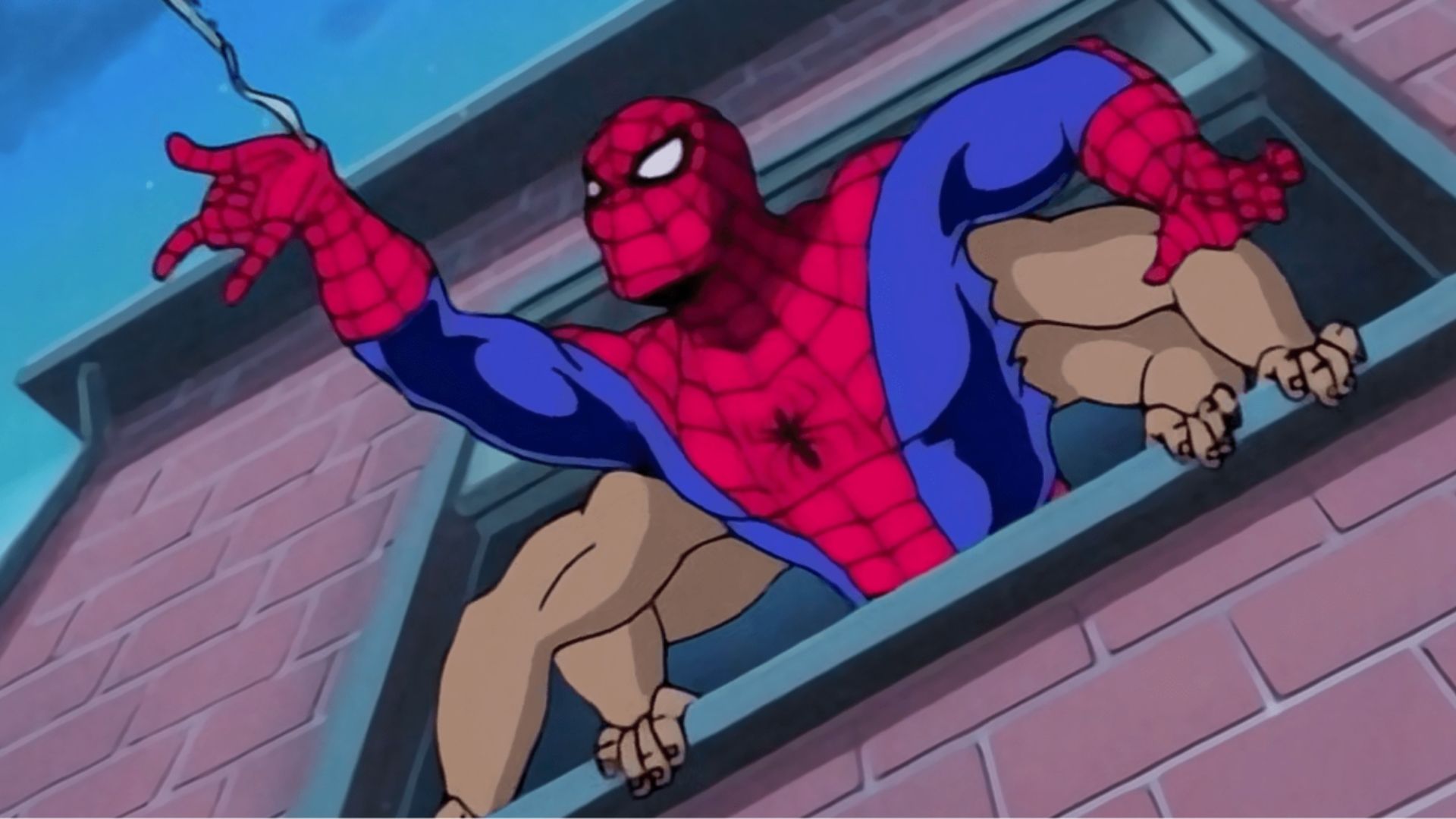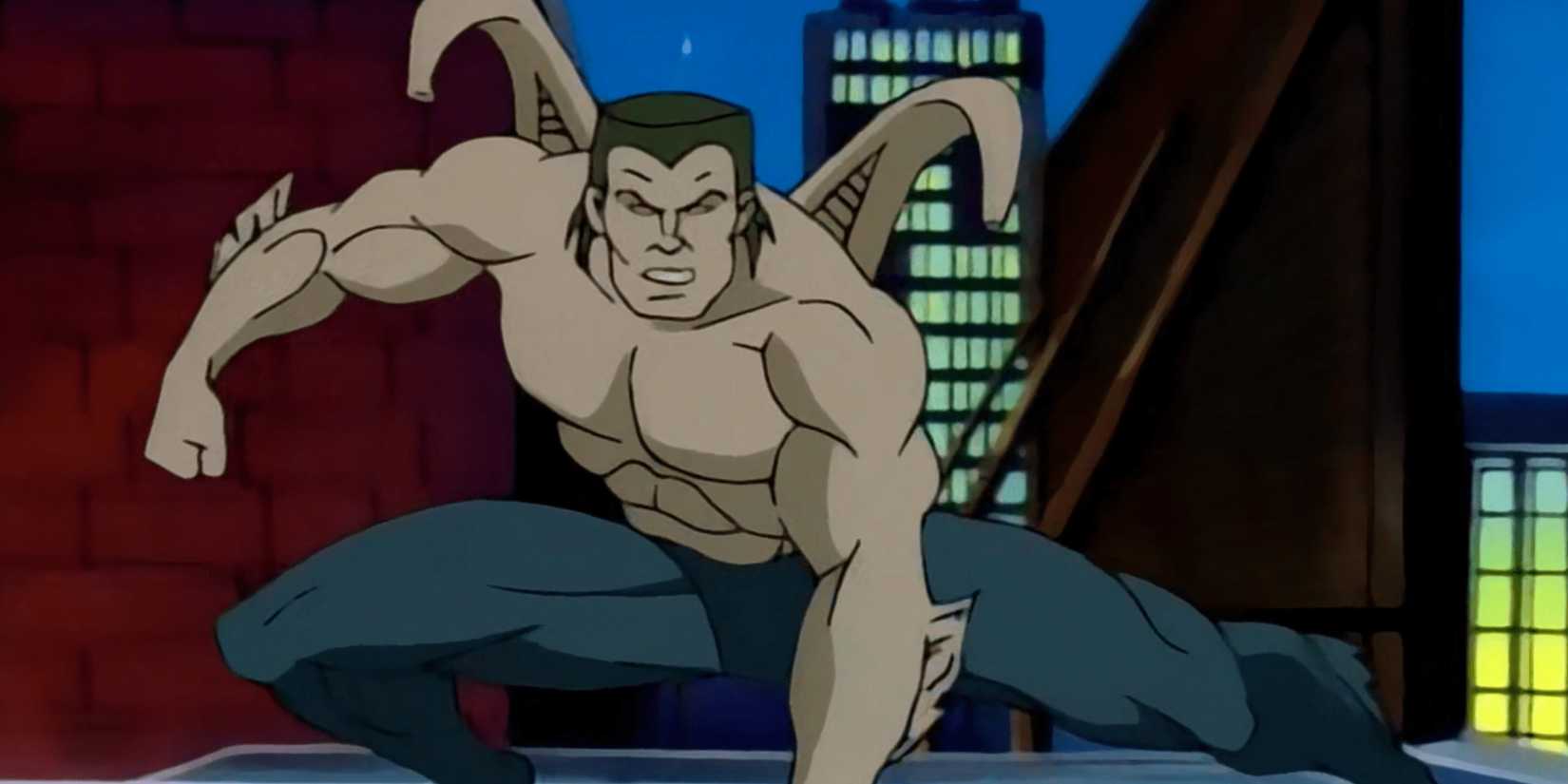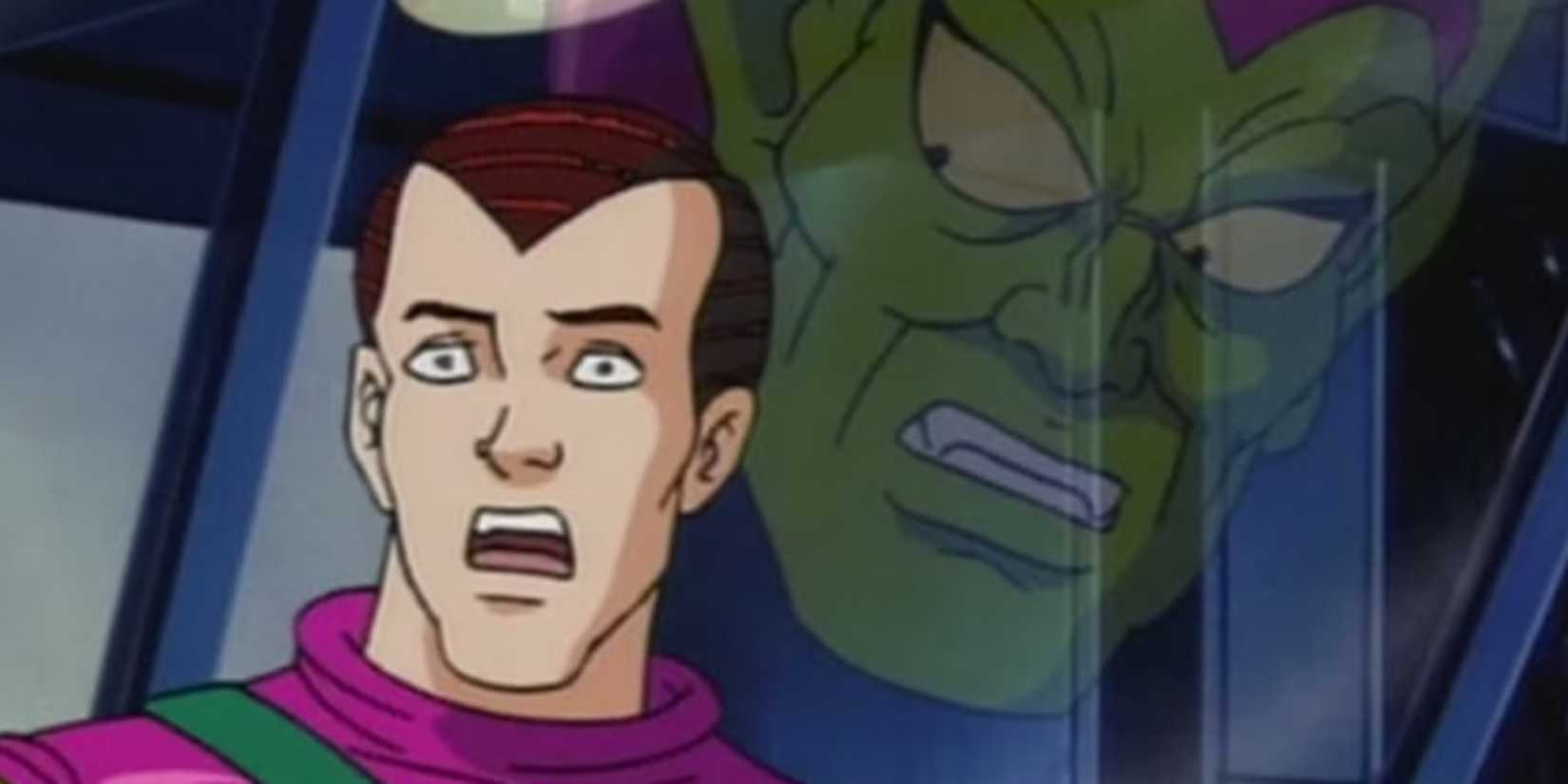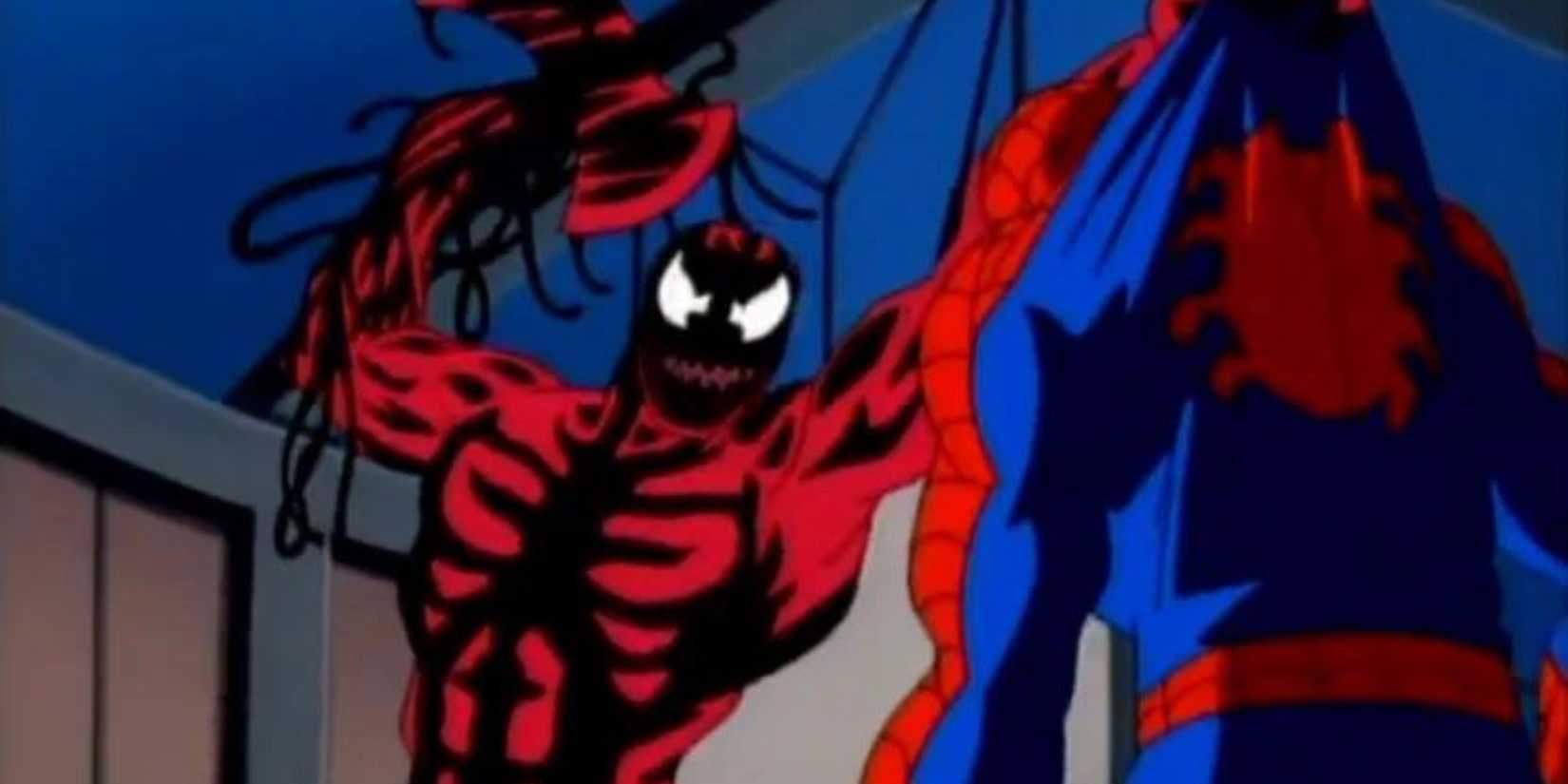
Even years after it first aired in the 1990s, Spider-Man: The Animated Series is still considered a standout version of the character. What made it special was how faithfully – and courageously – it brought comic book stories to life on television, more so than many other animated adaptations.
This wasn’t just a loyal and lively adaptation; it was arguably one of the most mature Spider-Man shows ever created, willing to explore themes rarely touched upon in children’s cartoons. Unlike other Spider-Man animated series that stuck to typical lighthearted formulas, this show didn’t shy away from darker and more complex storylines. Previous versions from the 60s and 80s often lacked substantial plots and relied on padding, while more recent series tended to tone down anything too intense.
Despite being a cartoon for kids, Spider-Man: The Animated Series never shied away from complex and sometimes disturbing themes. It often featured shocking visuals and explored characters’ mental struggles, creating a show that felt more like a mature, late-night program than typical children’s entertainment. This willingness to push boundaries is why the show’s most intense moments have stayed with viewers for so long.
Doc Connor’s Transformation
A Full-On Transformation Sequence Made The Series’ Body Horror Unforgettable

The first episode of Spider-Man: The Animated Series, “Night of the Lizard,” immediately set a dark and intense tone, largely thanks to Dr. Curt Connors’ frightening transformation. Instead of shying away from the gruesome details, the show fully embraced the body horror, showing viewers exactly how Connors’ body twisted and changed as he became the Lizard – his skin rippling, his posture bending, and his features becoming distorted.
The show didn’t hold back when introducing The Lizard. The premiere episode of Spider-Man: TAS showed his transformation in full, graphic detail – from growing claws to changing eyes and an elongating jaw. This was a surprisingly intense visual for a children’s cartoon, particularly in an episode designed to set the overall tone of the series.
This scene established the show’s willingness to explore truly frightening themes. Many fans remember it as the moment they realized Spider-Man: The Animated Series wouldn’t hold back from showing disturbing images. It’s a key example of how the series leaned into its darker side and wasn’t afraid to be genuinely scary.
The Downfall Of Alistair Smythe
Smythe’s Tragic Spiral Turned A Genius Inventor Into A Mindless Monster

Alistair Smythe first appeared in Spider-Man: The Animated Series as a gifted inventor who used a wheelchair. However, his story soon became one of the most depressing in the show. His change into the Ultimate Spider-Slayer – a cyborg with limited control over his own actions – was unsettling, as he gradually lost his humanity while pursuing more power.
His situation went from bad to worse when a serum was injected into him, causing further mutations and transforming his body into a horrifying, uncontrollable form. The physical changes were terrifying, but the emotional impact was even more devastating. Smythe discovered that everything he’d dedicated his life to had been orchestrated by the man who was believed to be responsible for his father’s death – Kingpin, from Spider-Man: The Animated Series.
Even after learning his father wasn’t actually dead—but in a state of suspended animation—Smythe continued to suffer emotionally. His story in Spider-Man: The Animated Series is a disturbing look at being manipulated and losing control of his own life, making it one of the show’s darkest and most impactful character arcs.
Herbert Landon Becomes A Monster
A Mutant-Hating Scientist Ended Up Suffering A Gruesome Fate That Shocked Audiences

Okay, so Herbert Landon… this guy was seriously against mutants, and played a big role in bringing Spider-Man into the world of the X-Men cartoon. But in the episode “Mutant’s Revenge,” his arrogance really came back to bite him. He created a serum meant to wipe out mutants, but it ended up turning him into this huge, monstrous thing. Honestly, the way they showed the transformation was pretty shocking – way darker and more intense than you’d expect from a typical weekday cartoon. It definitely stood out!
The animators fully embraced how terrifying this Spider-Man villain’s new form was. His body stretched and twisted, and his face changed so much he hardly looked human anymore. The design was more like something from a horror movie than a typical superhero film, really highlighting how awful his transformation was.
The situation was made even worse by the fact that Landon stayed awake and understood what was happening to him. He was trapped by the results of his own anger and horrified by his new appearance. This heartbreaking transformation, along with its disturbing imagery, made this one of the most shocking and unsettling stories in Spider-Man: The Animated Series.
Morbius’s Suction Cup Hands
Morbius’ Plasma-Draining Hands Looked More Disturbing Than Any Vampire Bite Could

When adding a vampire character to the cartoon Spider-Man: The Animated Series, creators needed to avoid scary imagery for young viewers. Their solution for the character Michael Morbius, however, was surprisingly unsettling. Instead of biting people, Morbius drained blood using creepy suction cups on his hands, which gave him a look more like a monster from a horror story than a typical vampire.
The first time Morbius used his new limbs was deeply disturbing. The film’s intense close-ups of the openings and how they grabbed people were strange, frightening, and unlike anything seen before. Rather than lessening the impact, the way this ability was shown actually made the body horror even more intense.
Morbius’s transformation was unsettling to begin with, but making it something completely different from a traditional vampire made it even more disturbing. The show embraced this strange quality, actually using a restriction on what they could show to create one of its most chilling scenes. It’s still considered one of the most disturbing character makeovers in the entire Spider-Man animated series.
Harry Osborn’s Descent Into Madness
Harry’s Psychological Collapse Was Portrayed With Rare Intensity For A Kids Show

Harry Osborn’s story is one of the most heartbreaking in any Spider-Man adaptation, and his descent into becoming the Green Goblin is powerfully portrayed in The Animated Series. The show bravely tackled Harry’s mental health struggles with a level of seriousness rarely seen in children’s cartoons. Instead of rushing through his trauma, it showed a gradual, devastating breakdown that felt realistic and impactful.
The Spider-Man: The Animated Series brilliantly brought Norman Osborn’s struggles with the Green Goblin to life. Through unsettling sounds and visuals, the show put viewers inside his head, letting them feel his fear and confusion as if they were experiencing his hallucinations alongside him. These mental battles were portrayed with the same intensity as the show’s action-packed fights.
When Harry Osborn finally became the Green Goblin, the story showed a level of emotional complexity rarely seen in Saturday morning cartoons. The storyline is a strong illustration of how Spider-Man: The Animated Series wasn’t afraid to tackle dark themes, going beyond typical villainy to explore psychological horror.
Every Episode Involving Symbiotes
The Symbiotes Turned The Show Into A Superhero Horror Series Whenever They Appeared

Whenever Venom or Carnage showed up in Spider-Man: The Animated Series, the show became much scarier, leaning into horror. The Symbiotes were creepy from the start, with their flowing, unpredictable movements and the disturbing way they changed their hosts’ bodies. Not only were their designs frightening, but they also made the storylines darker and more intense.
One of the most memorable and frightening moments in the show happened during the Venom storyline, when Peter had a dream about being overwhelmed by a giant Symbiote. The disturbing and intense visuals were so effective, they were even used in the opening credits. It was a truly scary scene, more like something from a horror movie than a children’s program.
The episodes featuring Carnage were particularly intense, as his unpredictable and destructive behavior made every appearance feel like a scene from a horror film. Combined with Eddie Brock’s obsessive pursuit of Peter Parker, these storylines consistently delivered some of the most frightening and suspenseful moments in the Spider-Man animated series, solidifying the show’s reputation for being subtly terrifying.
Peter’s Mutation Into Man-Spider
Peter’s Gradual Mutation Into A Monster Delivered Relentless, Unsettling Body Horror

I still remember watching Peter Parker turn into the Man-Spider in Spider-Man: The Animated Series – it was seriously unsettling! The way they showed his transformation, step by step, was just… disturbing. Each episode brought new, frightening changes to his body, and you really felt his panic as he lost control and started to feel like someone – or something – else. It was a really intense storyline, and honestly, a lot of it was pure body horror.
The Man-Spider design was truly frightening, filled with sharp fangs, extra limbs, and nightmarish imagery – a stark contrast to the heroic Spider-Man audiences knew. What made it even more disturbing was that Peter Parker was fully aware of his horrifying transformation, conscious of becoming a monster but unable to do anything about it. This tragic, gradual change added a powerful emotional layer to the shocking visuals.
The story was surprisingly mature for a children’s cartoon of the 1990s. With its themes of frightening transformation and losing one’s identity, it was one of the most gripping parts of the series, and a great illustration of how the show wasn’t afraid to explore ideas typically found in horror or science fiction.
The Death Of Mary Jane’s Clone
Watching MJ’s Clone Realize The Truth Before Dissolving Made For The Show’s Most Traumatizing Moment

The most heartbreaking moment in Spider-Man: The Animated Series occurs when Mary Jane Watson’s clone tragically dies in “The Return of Hydro-Man.” Throughout the storyline, everyone believed the clone was the real MJ, making her sudden and terrifying disintegration into water – while still aware of what was happening – especially devastating.
The scene depicted her collapse with painful clarity. The clone of MJ pleaded with Peter for assistance, utterly lost and frightened as she began to fall apart. The terror wasn’t simply what happened to her physically, but the emotional impact of discovering her whole life was based on a deception. It was especially heartbreaking for someone who thought she had a real life, cherished memories, and a future to look forward to, to experience such a devastating end.
A single scene from Spider-Man: The Animated Series stands out as a turning point for children’s animation. It’s remembered as one of the most powerful and disturbing sequences in Spider-Man’s animated history, and fans continue to point to it as one of the bleakest moments ever depicted in a children’s program – not just Spider-Man, but any kids’ show.
Read More
- Mark Wahlberg Battles a ‘Game of Thrones’ Star in Apple’s Explosive New Action Sequel
- LTC PREDICTION. LTC cryptocurrency
- Physical: Asia fans clap back at “rigging” accusations with Team Mongolia reveal
- Where Winds Meet: March of the Dead Walkthrough
- Invincible Season 4 Confirmed to Include 3 Characters Stronger Than Mark Grayson
- Top Disney Brass Told Bob Iger Not to Handle Jimmy Kimmel Live This Way. What Else Is Reportedly Going On Behind The Scenes
- Dragon Ball Meets Persona in New RPG You Can Try for Free
- LINK PREDICTION. LINK cryptocurrency
- Stephen King’s Four Past Midnight Could Be His Next Great Horror Anthology
- Assassin’s Creed Mirage: All Stolen Goods Locations In Valley Of Memory
2025-11-24 21:02